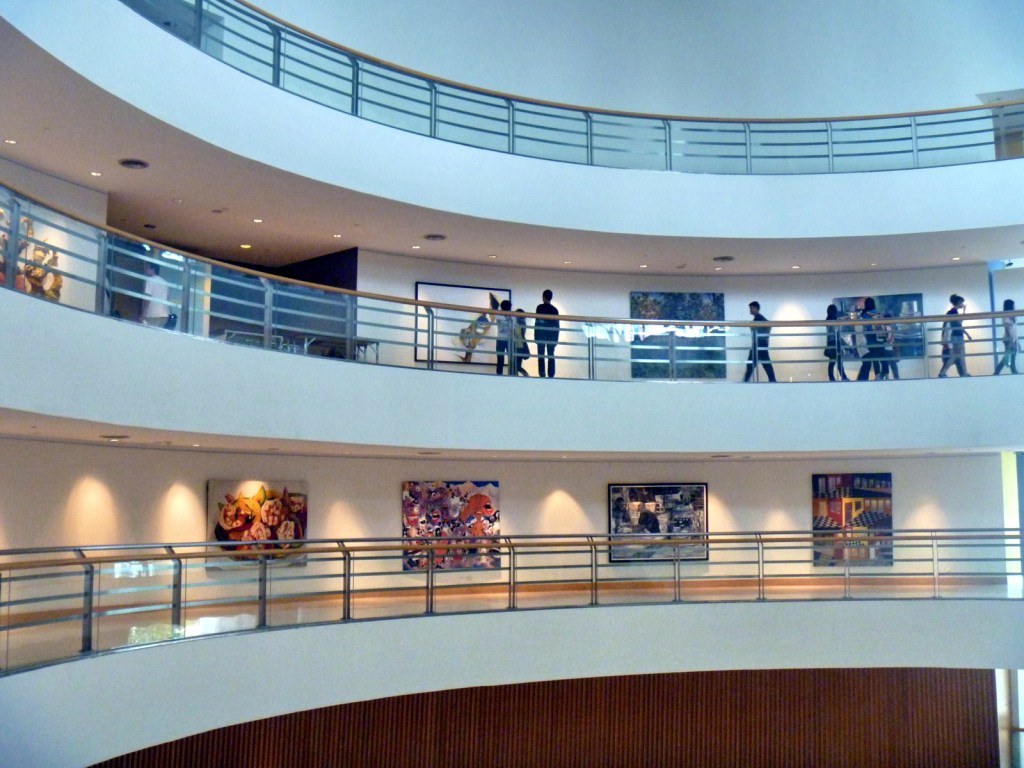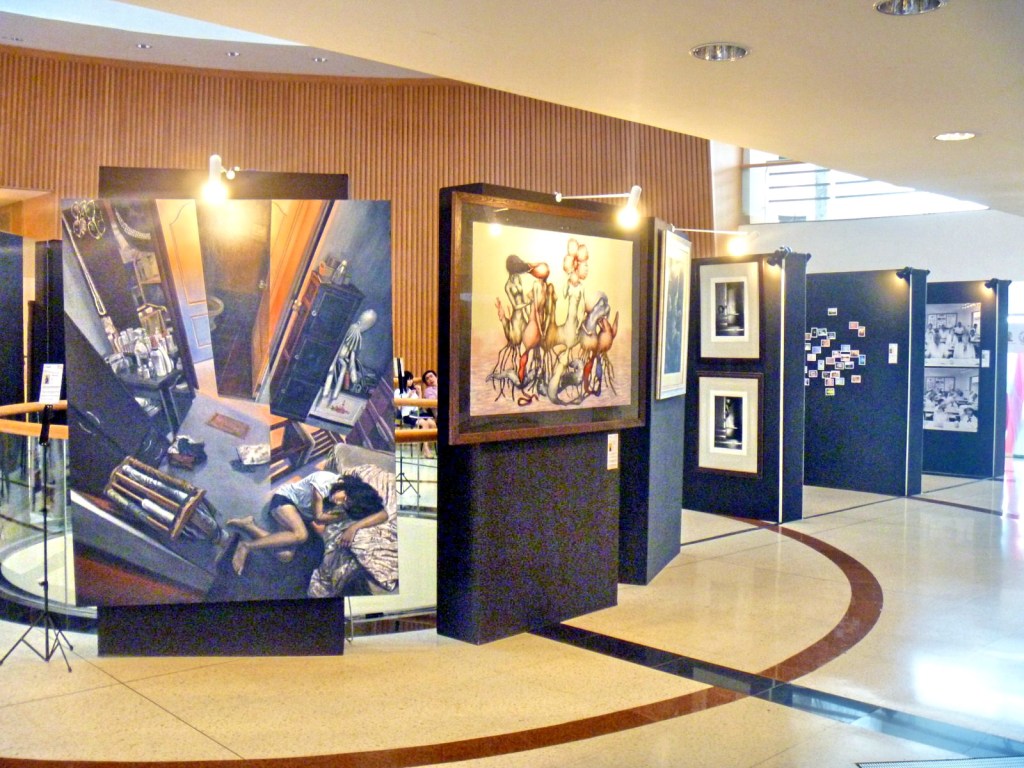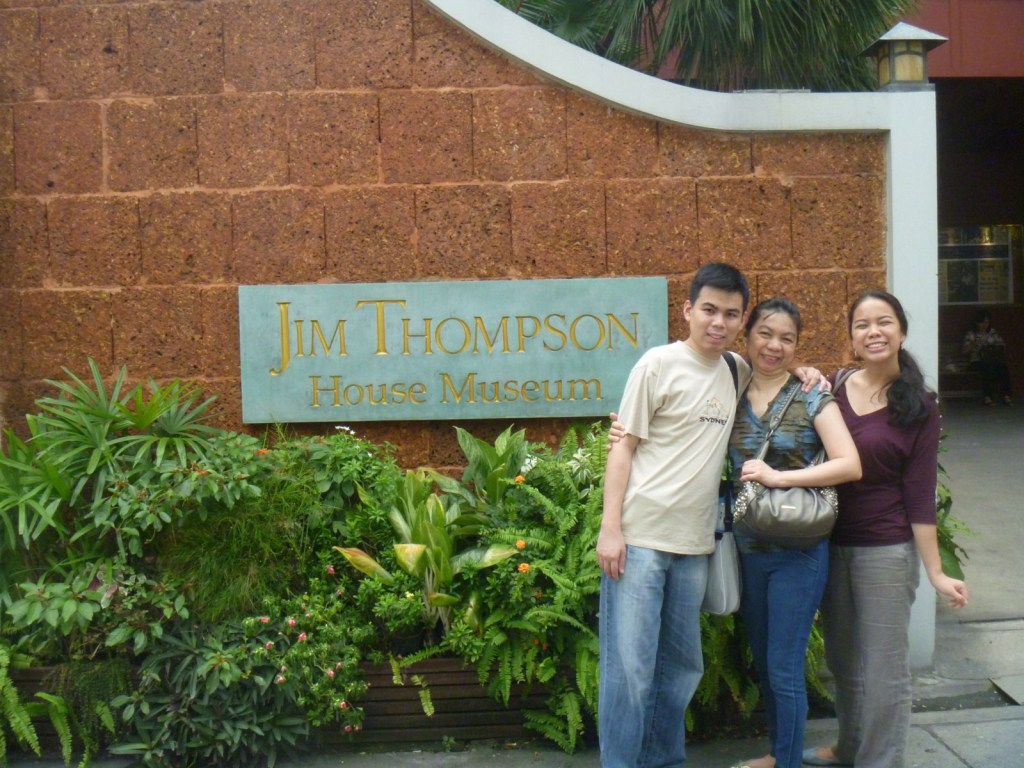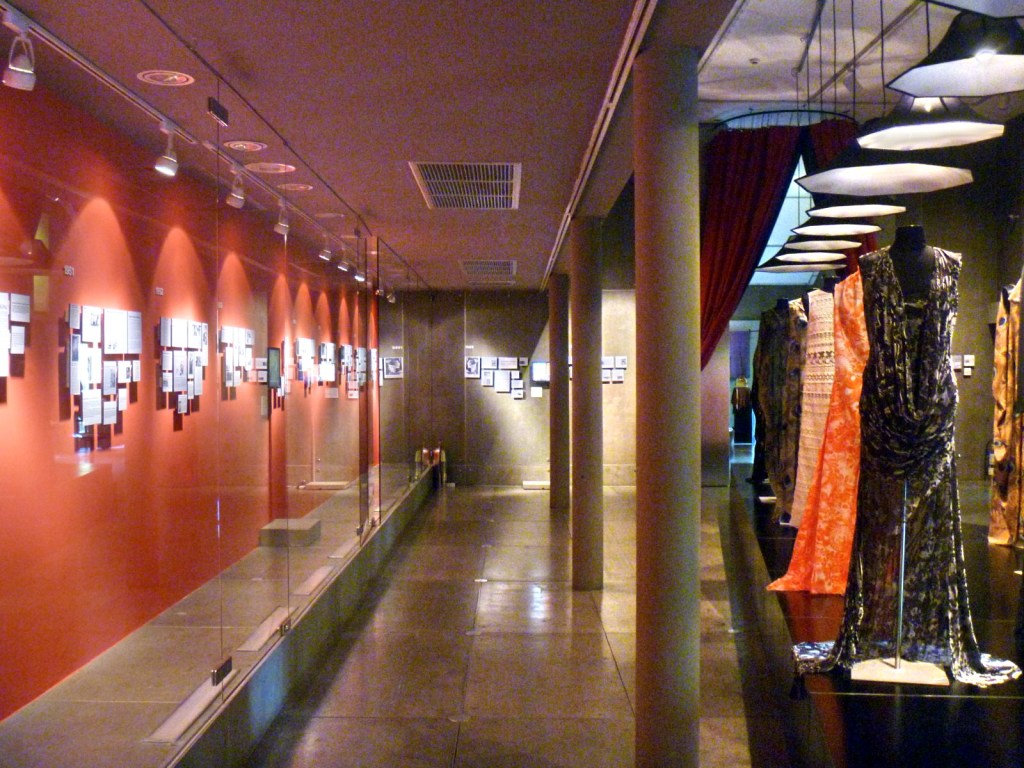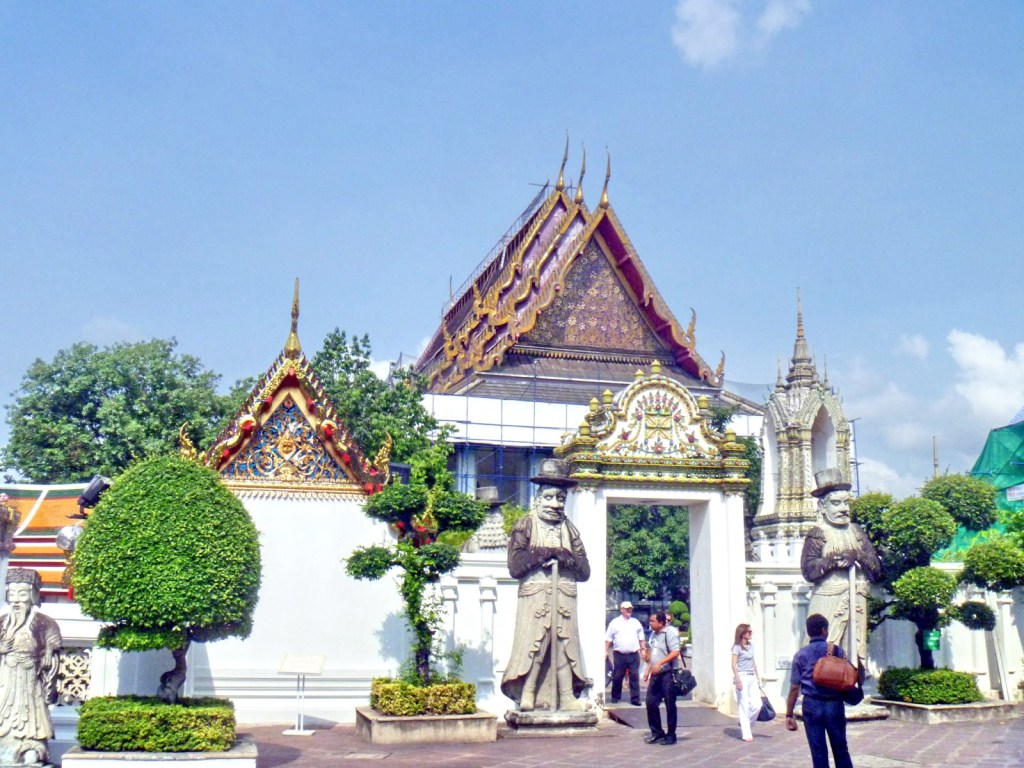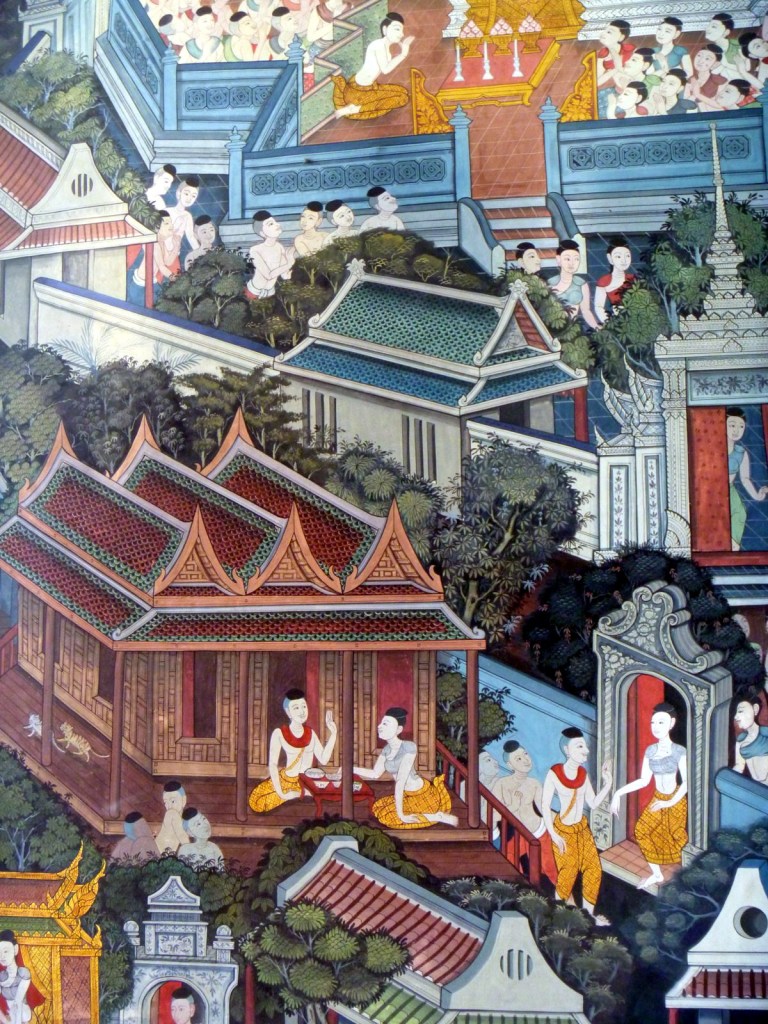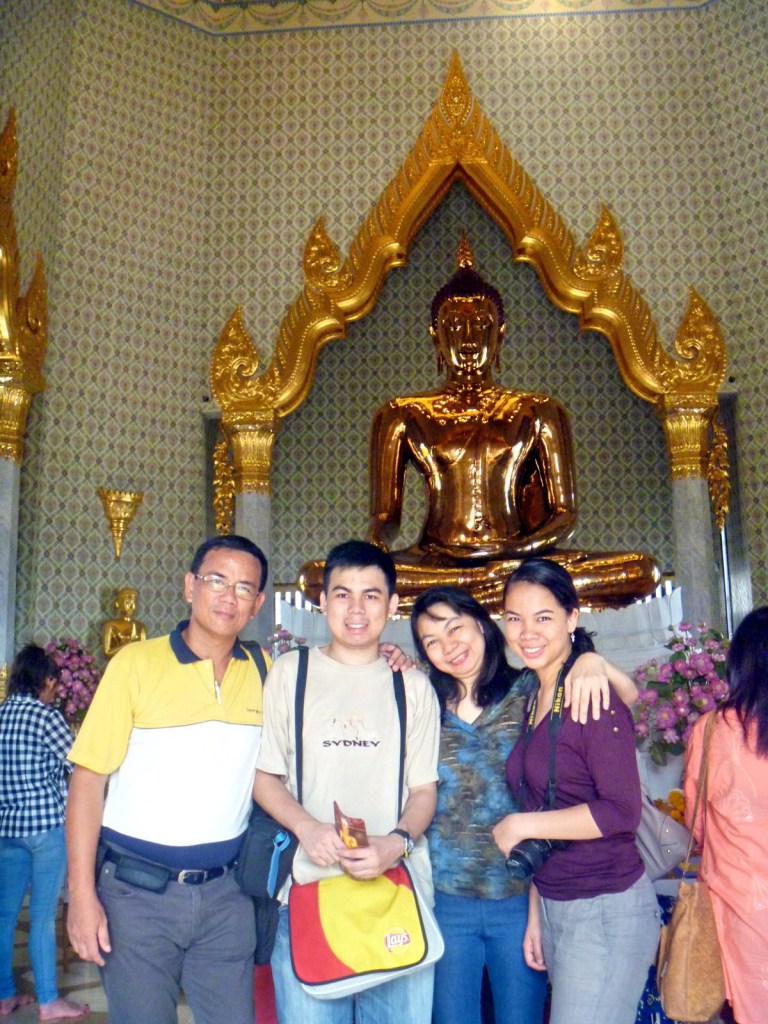While in the very heart of Bangkok’s main shopping and entertainment area, we took a nice respite from all this shopping by checking out Bangkok’s small but very vibrant contemporary art scene at the Bangkok Arts and Culture Center (BACC).
The city’s latest effort to create an all-integrated art experience, it has several private art galleries plus non-museum operated designer boutiques, restaurants, the delightful IceDEA (the innovative ice cream design store), coffee shops, music studios, multipurpose room, etc., on the first 3 floors, and main galleries, meeting rooms, projector rooms for movies, and a theater on the upper floors. Mimicking New York’s Guggenheim Museum, artwork is also on display along the spiral walkway. There is an art library, with 6,000 books, in the basement.
This 438 million baht, massive, 25,000 sq. m. contemporary art museum, originally named Bangkok Metropolitan Museum of Contemporary Art (BMOCA), was started in 2000, later halted due to funding problems and alleged corruption, restarted in 2005, and renamed Bangkok Art and Culture Center before its opening on July 28, 2008.
Here, we can interact with a range of creative mediums (films, conceptual photography, theater, sculpture, fine arts, etc.) on a number of different levels. Some of the collections on display are permanent pieces of the center while others are rotated or are temporary. The building was designed to allow just enough light to illuminate the interior’s 10 floors without damaging the collections.
After our museum visit, we left BACC, via the bridgeway, for the MBK (Mah Boon Krong) Mall. The museum is also near the Siam Discovery Center and is easily accessible from the National Stadium and Siam BTS Skytrain stations.
- A Grotesque Work of Art
Bangkok Arts and Culture Center: 939 Rama 1 Road, Wangmai, Pathumwan, Bangkok 10330, Thailand. Tel: +66 02 214 6630-1. Fax: +66 02 214 6632. E-mail: bkkart@yahoo.com. Website: www.bacc.or.th. Open Tuesdays-Sundays, 10 AM-9 PM. Admission is free.


